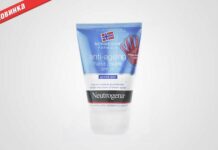Trail running offers an exhilarating escape from the concrete jungle, allowing runners to connect with nature while testing their limits. But not all shoes are created equal—especially when navigating muddy trails, rocky terrain, or uneven paths. If you’re a woman seeking the perfect blend of comfort, durability, and performance, you’ve come to the right place. In this guide, we’ll break down the top trail running shoes for women, explaining the key features to consider and how they cater to different needs.
🏃♀️ Who Is This For?
Whether you’re a seasoned trail runner or just starting your adventure, these recommendations are designed to meet a variety of needs. From cushioning levels to stability features, we’ve covered everything you need to know to find the right shoe for your unique style and terrain preferences.
🔍 Key Features to Consider
Trail running shoes are built to handle the toughest conditions, but not all are the same. Here’s what to look for when choosing your next pair:
1. Cushioning
The right amount of cushioning can make or break your trail running experience. Here’s how to choose:
-
Minimal Cushioning (Less than 20 mm)
If you’re an experienced trail runner with strong feet and ankles, minimal cushioning might be your best bet. These shoes provide a “ground feel,” keeping you connected to the terrain. However, they offer less protection on rough trails, so they’re not for everyone. -
Maximum Cushioning (At Least 30 mm)
If you prioritize comfort and impact protection, maximum cushioning is your go-to. These shoes are plush and ideal for long-distance running on rocky or uneven trails. Keep in mind that extra cushioning often comes at the cost of support, so they may not be the best for runners with overpronation.
2. Stability
A stable shoe keeps your feet locked in place, preventing injuries like ankle rolls or foot fatigue. Here’s what to look for:
-
Rigid Heel Counter
This is a firm plastic structure that wraps around the heel, preventing movement. It’s especially important for runners with overpronation—when the foot rolls inward too much. -
Torsional Stability
This refers to how well the shoe resists twisting. A good trail shoe should offer resistance in the midsole and heel, reducing the risk of pain in the big toe or balls of the feet. -
Forefoot Flexion
The forefoot should bend just enough to adapt to uneven terrain but remain rigid enough to provide propulsion. This balance helps with natural foot movement and trail performance.
3. Traction
The outsole’s lug pattern and rubber compound determine how well the shoe grips the trail. Here’s what to consider:
-
Shallow Lugs (3–4 mm)
These are ideal for hard-packed trails or well-maintained paths. Their lower-profile design prevents debris from getting trapped, but they don’t offer as much grip on loose or slippery terrain. -
Thick Lugs (5 mm and over)
Made from durable rubber, these lugs are designed for rocky or muddy trails. They provide superior grip and are built to withstand wear and tear.
🏆 Top Trail Running Shoes for Women
After testing 50 pairs across various terrains—rocky paths, muddy trails, and everything in between—we’ve narrowed it down to the best options for women. Here’s our top picks:
Best Overall: Hoka Mafate 5
This shoe combines plush cushioning with a durable outsole, making it perfect for long-distance trail running. Its thick lugs and torsional stability make it a standout choice for anyone seeking comfort and performance.
Best for Dry Terrain: Saucony Endorphin Pro 4
If you’re tackling dry, hard-packed trails, this shoe’s shallow lugs and responsive midsole will keep you moving effortlessly. It’s lightweight and designed for speed without sacrificing durability.
Best for Racing: Brooks Ghost 13
Race-ready runners will love this shoe’s balanced cushioning and stability features. It’s a versatile option that works well for both training and competition.
Best Stability Shoe: ASICS Gel-Venture 8
With its rigid heel counter and Gel cushioning, this shoe is a must-have for runners who need extra support. It’s ideal for those with overpronation or anyone running on uneven terrain.
Best Daily Trainer: Altra Trails 2.5
This shoe’s minimalist design and zero-drop platform make it perfect for everyday training. It’s comfortable for long runs and adapts to various terrains.
Best Slip-On: Hoka Speedgoat 5
Love the convenience of slip-ons? This shoe delivers without compromising on performance. Its durable outsole and cushioning make it a standout for trail runners on the go.
🧪 How We Tested
To ensure our recommendations are trustworthy, we went the extra mile—literally. Over the course of our testing, we ran at least 20 miles in each pair across a variety of terrains, including rocky paths, muddy trails, and dirt roads. We also consulted podiatrists and running coaches to fine-tune our criteria for cushioning, stability, and traction. The result? A curated list of trail running shoes that deliver on comfort, durability, and performance.
💎 The Takeaway
Finding the right trail running shoe doesn’t have to be overwhelming. By focusing on cushioning, stability, and traction, you can narrow down the options to suit your needs. Whether you’re a weekend warrior or a competitive trail runner, there’s a shoe on this list for you. Lace up and enjoy the journey—your feet (and your legs) will thank you














































































